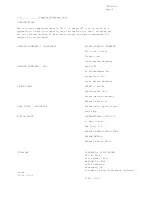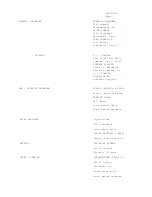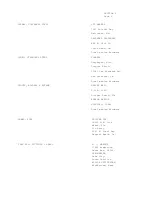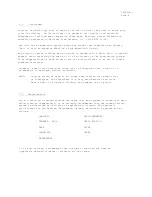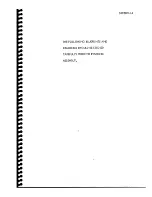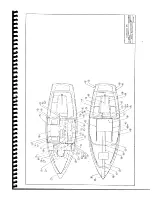
SECTION 3
Page 2
3.2
Micro Balloon Filled Resin
Micro Balloons mixed with a polyester resin will yield micro balloon filled
resin, which is used in yacht construction for casting, fairing, and sealing. Its
"pot life" is longer and, therefore, cures more slowly than pure resin. The
slower curing time allows more "working pot life time" and generates less heat
without distortion.
Mixing Procedure
1.
To prepare the micro balloon filled resin use no less than 1/2%
and no more than to of catalyst by volume. For example: 1/2 ounce
of catalyst with each gallon of clear resin.
2.
Add micro balloons to the catalyzed resin slowly, stirring
thoroughly.
3.
The mixture may be thick or thin and cure slowly
or quickly, depending on its application. For
example, in large areas such as the keel, rudder,
hull, and deck, fast curing is not required and
slow curing will avoid distortion.
4.
The mixture should appear, and be, about the consistency of
a thin pancake batter.
5.
Other areas where micro balloon filled resin is
employed should contain more catalyst and more
asbestos to form a thicker compound.
3.3
Bonding
All of the interior liners, head liners, and rubber tubes are fastened and secured
to the hull and deck by bonding. The bonding process is similar to bonding any type
of structure (rudder, bulkhead, etc.). However, some items require thicker bonds
for greater strength.
The procedures for making a bond are listed below:
a)
Bonding surfaces should be sanded clean of all paint,
loose glass fibers, and any foreign matter which will
interfere with a glass-to-glass bond.
Summary of Contents for Coronado 25
Page 1: ......
Page 21: ......
Page 22: ......
Page 23: ......
Page 24: ......
Page 25: ......
Page 26: ......
Page 27: ......
Page 28: ......
Page 29: ......
Page 30: ......
Page 31: ......
Page 32: ......
Page 33: ......
Page 34: ......
Page 35: ......
Page 36: ......
Page 37: ......
Page 38: ......
Page 39: ......
Page 40: ......
Page 41: ......
Page 42: ......
Page 43: ......
Page 44: ......
Page 45: ......







